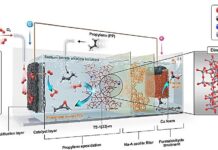Astronomers have identified a “rogue” planet exhibiting extraordinarily rapid growth, consuming gas and dust at a rate that has scientists intrigued and searching for answers. This planet, designated Cha 1107-7626, is currently the fastest-growing free-floating planet ever observed, accumulating an astounding 6.6 billion tons of matter every second. The discovery, made possible by the European Southern Observatory’s Very Large Telescope (VLT) in Chile and the James Webb Space Telescope (JWST), raises fundamental questions about the distinction between massive planets and small stars.
What are Rogue Planets and Why is This One Unusual?
Rogue planets, also called free-floating planets, are planetary bodies drifting through space, unbound to any star. While their existence has been confirmed for some time, Cha 1107-7626 stands out due to its exceptional growth rate. Observations reveal it’s in a state of constant accretion – pulling in gas and dust from its surrounding environment. What’s particularly surprising is the irregularity of this growth; the planet experienced a significant accretion burst in August 2025, consuming eight times the material it had previously.
The Mystery of Formation: Planet or Mini-Star?
The unexpected feeding frenzy of Cha 1107-7626 has ignited a key question in astrophysics: how do these objects form? Scientists are considering two main possibilities. Did this planet originate within a planetary system but was ejected due to gravitational interactions, or did it form independently from a collapsing cloud of gas and dust, similar to how stars are born?
“Our main motivation to study this kind of object is to understand whether these objects are former planets that have been ejected from their planetary system, or they have formed ‘isolated’ from the gravitational collapse of molecular cloud material, like stars,” explains lead author Víctor Almendros-Abad.
The discovery is significant because accretion bursts—sudden increases in the rate of material accumulation—are well-known phenomena in star formation. Finding a similar burst in a planet-mass object may indicate a shared, universal mechanism driving accretion, regardless of an object’s size and formation pathway.
“Accretion bursts have been known for quite some time; the first was discovered in the late 1930s,” says co-author Alexander Scholz. “The discovery of a similar event in a planetary-mass object may be a clue that there is a universal mechanism behind accretion bursts.”
The Role of Accretion Bursts in the Universe
Accretion bursts are not merely events impacting individual objects; they also shape the environments where stars and planetary systems develop. Young stars can heat up surrounding gas and dust clouds through these bursts, influencing the chemistry of meteorites—a crucial aspect of our own solar system’s history.
Recent Discoveries and Future Research
The detection of rogue planets has become increasingly feasible with advancements in telescope technology like JWST and VLT. JWST, in particular, has been instrumental in identifying numerous rogue planets, including a notable discovery of over 500 within the Orion Nebula, a region renowned for ongoing star formation.
Future observations with JWST and VLT will focus on studying more rogue planets to determine how prevalent these rapid accretion events are and refine our understanding of their evolution.
“One of the next steps is to understand how common these types of events are in ‘rogue planets,’” says Almendros-Abad. “This will tell us how important [accretion events] are in their evolution.”
This unique discovery underscores the complexity of planetary formation and challenges existing models, suggesting that the line between planets and stars might be more blurred than previously thought. The study of Cha 1107-7626 and other rogue planets promises to shed light on fundamental processes shaping the cosmos.































